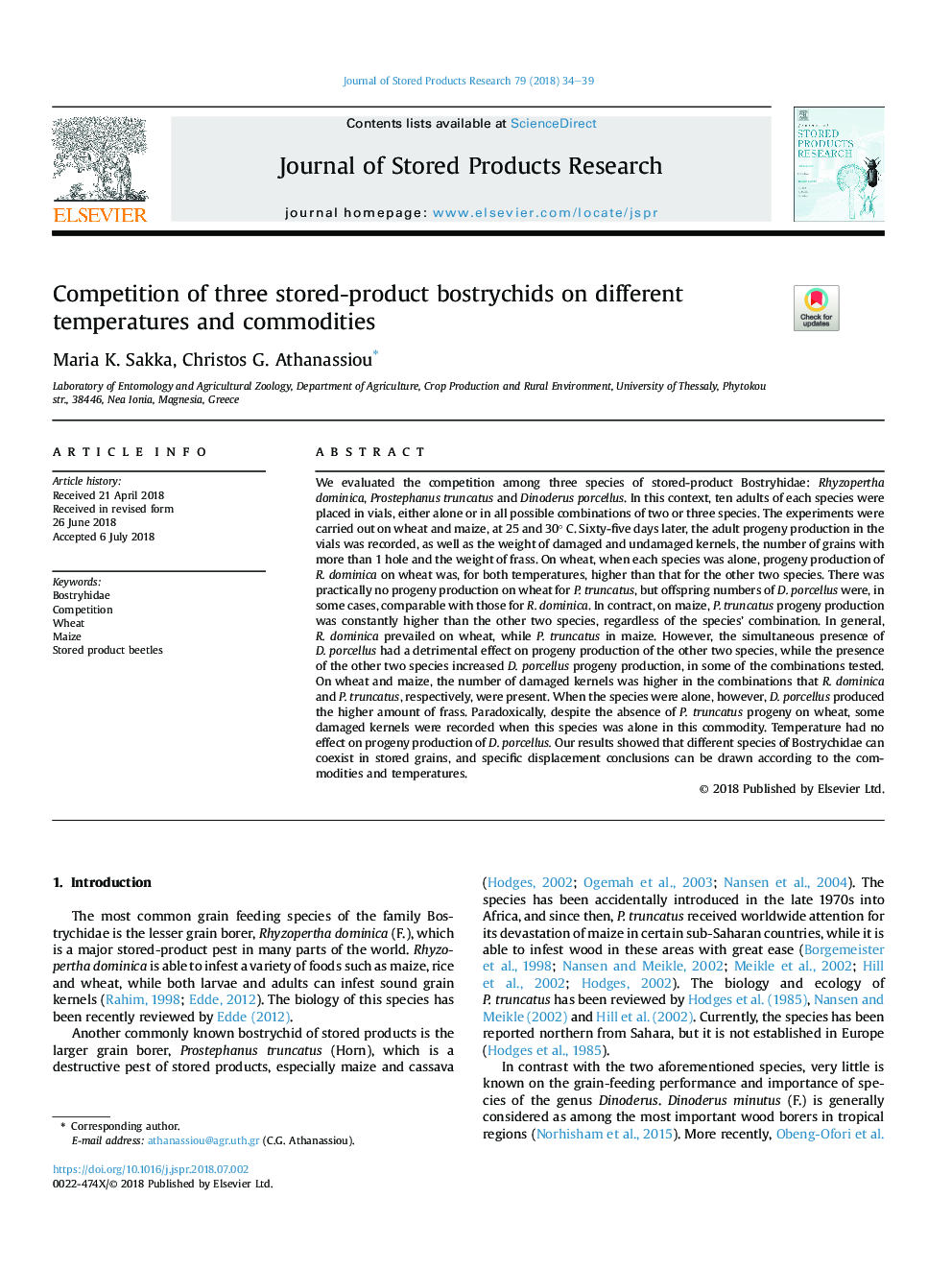| Article ID | Journal | Published Year | Pages | File Type |
|---|---|---|---|---|
| 10138752 | Journal of Stored Products Research | 2018 | 6 Pages |
Abstract
We evaluated the competition among three species of stored-product Bostryhidae: Rhyzopertha dominica, Prostephanus truncatus and Dinoderus porcellus. In this context, ten adults of each species were placed in vials, either alone or in all possible combinations of two or three species. The experiments were carried out on wheat and maize, at 25 and 30° C. Sixty-five days later, the adult progeny production in the vials was recorded, as well as the weight of damaged and undamaged kernels, the number of grains with more than 1 hole and the weight of frass. On wheat, when each species was alone, progeny production of R. dominica on wheat was, for both temperatures, higher than that for the other two species. There was practically no progeny production on wheat for P. truncatus, but offspring numbers of D. porcellus were, in some cases, comparable with those for R. dominica. In contract, on maize, P. truncatus progeny production was constantly higher than the other two species, regardless of the species' combination. In general, R. dominica prevailed on wheat, while P. truncatus in maize. However, the simultaneous presence of D. porcellus had a detrimental effect on progeny production of the other two species, while the presence of the other two species increased D. porcellus progeny production, in some of the combinations tested. On wheat and maize, the number of damaged kernels was higher in the combinations that R. dominica and P. truncatus, respectively, were present. When the species were alone, however, D. porcellus produced the higher amount of frass. Paradoxically, despite the absence of P. truncatus progeny on wheat, some damaged kernels were recorded when this species was alone in this commodity. Temperature had no effect on progeny production of D. porcellus. Our results showed that different species of Bostrychidae can coexist in stored grains, and specific displacement conclusions can be drawn according to the commodities and temperatures.
Keywords
Related Topics
Life Sciences
Agricultural and Biological Sciences
Agronomy and Crop Science
Authors
Maria K. Sakka, Christos G. Athanassiou,
